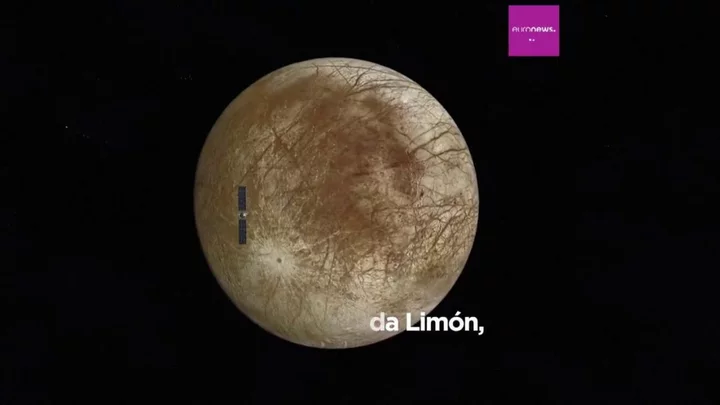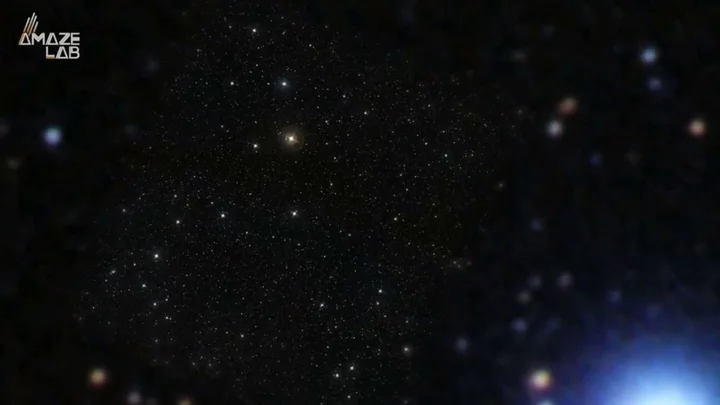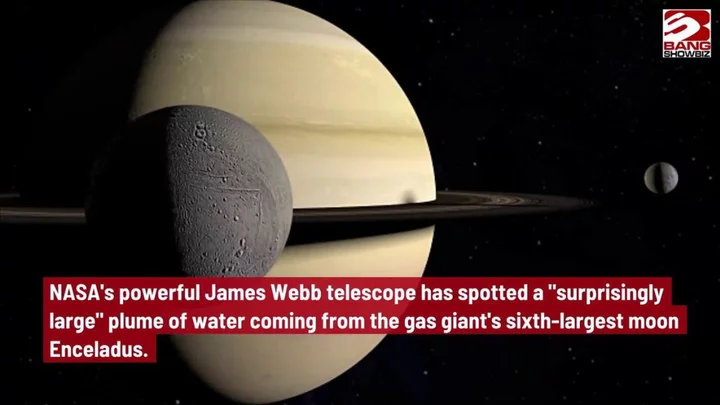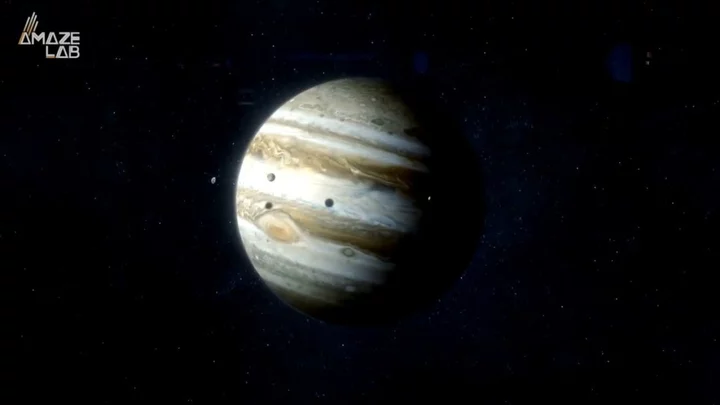
Scientists have figured out what the sun sounds like
Scientists have figured out what the sun sound like - because yes, it makes a racket. By recording acoustical pressure waves in the sun, using an instrument called the Michelson Doppler Imager, solar physicists from Stanford University have determined the solar surface noise of the sun and it turns out it is pretty loud. If the sounds, which are apparently like 'screaming sirens' were able to pass through space, it would be 100 decibels by the time it reached us here on Earth, according to the American Academy of Audiology. This equals out to tens of thousands of watts of energy generated per metre on the sun, or 10x to the 100x the power of speakers at a rock concert.. Sign up to our free Indy100 weekly newsletter However, humans on Earth are unable to hear any of this because the sound waves emit at frequencies that are too low for the human ear to detect. The sun creates noise due to the constant flow of hot material on the surface and the sinking of cooled material towards the centre. Have your say in our news democracy. Click the upvote icon at the top of the page to help raise this article through the indy100 rankings.
2023-06-07 17:57

Rishi Sunak's adviser warns that AI could ‘kill many humans’ in just two years
An adviser to Rishi Sunak has made a worrying confession about AI, and its ability to kill people in the near future, during a new interview with Talk TV. Matt Clifford is currently leading the prime minister on the government's Foundation Model Taskforce, using the likes of ChatGPT. "You can use AI today to create new recipes for bio weapons or to launch large-scale cyber attacks. These are bad things", he said. "You can have really very dangerous threats to humans that could kill many humans – not all humans – simply from where we would expect models to be in two years’ time." Click here to sign up for our newsletters
2023-06-06 18:57

A major change is coming for people who want to swear over text
Have you ever tried to swear over text, only to find that your intended expletive has been autocorrected to "ducking". Fear no more, because Apple has announced it will upgrade its autocorrect feature so people can swear away to their heart's content. “In those moments where you just want to type a ducking word, well, the keyboard will learn it, too,” said Craig Federighi, Apple’s software chief at the company’s annual Worldwide Developers Conference in Cupertino on Monday. We'll leave you to work out what word people really want to say when they end up writing "ducking"... Sign up to our free Indy100 weekly newsletter TechCrunch reported that iOS 17, which will roll out to the general public by September, will feature an upgraded autocorrect powered by AI. Over time, the AI model will learn to predict words and phrases that the iPhone user repeats, including swear words. Meanwhile, it comes as the company announced it was making a new mixed-reality headset, which caused quite the stir on social media. Big times for iPhone users and people with potty mouths, then... Have your say in our news democracy. Click the upvote icon at the top of the page to help raise this article through the indy100 rankings.
2023-06-06 17:47

Apple's new Vision Pro AR headset is giving major Black Mirror vibes
Apple has unveiled its first-ever augmented reality headset, and it's giving people the creeps over how futuristic it is. The headset has a two-hour battery life, and will cost $3,499 (£2,849), when it's released next year. Functionality includes watching TV, being able to use your favourite apps in a 3D setting, FaceTime calls, and using a keyboard, with CEO Tim Cook saying it's the ultimate way to 'blend the digital and virtual' worlds. However, fans have been quick to point out it looks like the start of a Black Mirror episode. Click here to sign up for our newsletters
2023-06-06 17:19

NASA publishes long-awaited report into UFOs and alien activity
NASA has held its first public meeting on the long-awaited report into UFOs. Last year, this new study was launched to investigate reports of UAP (unexplained anomalous phenomena) and for the first time the space agency has made the latest findings public. There have been around 800 events collected over the past 27 years, the expert panel says, with some reports of unexplained metallic flying orbs - all within Earth’s airspace. Sign up to our free Indy100 weekly newsletter Dr Sean Kirkpatrick, director of the US Department of Defence’s All-Domain Anomaly Resolution Office (AARO) noted on the findings: “We see these all over the world, and we see these making very interesting apparent maneuvers,” he said. “While we are still looking at it, I don’t have any more data other than that. Being able to come to some conclusion is going to take time, until we can get better-resolved data on similar objects that we can then do a larger analysis on." The Pentagon now receives between 50 and 100 monthly reports, Dr Kirkpatrick added, referring to a statistic from the report. Most sightings have some kind of explanation such as commercial aircraft or military drones, though there are still 2 to 5 per cent of those events which “display signatures that could be anomalous." Public Meeting on Unidentified Anomalous Phenomena (Official NASA Broadcast) www.youtube.com About half of these include some kind of metallic looking orbs or round spheres that have been noticed by aircraft at high altitudes. However, is this is not enough evidence of the existence of extraterrestrial life, says astrophysicist and chair of the study group, David Spergel. “To make the claim that we’ve seen something that is evidence of non-human intelligence, it would require extraordinary evidence,” he added. “And we have not seen that. I think that’s important to make clear.” Meanwhile, online harassment was also a topic at the meeting as trolls have been targeting NASA’s UAP study team which Dr Nicola Fox, NASA Science Mission Directorate associate administrator said is "hindering scientific progress." “It is really disheartening to hear of the harassment that our panelists have faced online all because they're studying this topic," she said. “Harassment only leads to further stigmatization of the UAP field significantly hindering scientific progress and discouraging others to study this important subject matter. Harassment also obstructs the public's right to knowledge." Watch the full public meeting on NASA's YouTube channel. Have your say in our news democracy. Click the upvote icon at the top of the page to help raise this article through the indy100 rankings.
2023-06-06 00:23

Eerie clip showing just how deep the ocean is has left people with the creeps
A graphic video showing just how deep the ocean really goes is giving people the creeps. Posted on YouTube by MetaBall Studios, the video keeps going down and down in the water, to the likes of the Titanic wreck (which sits at 3700m below the surface), and even the level at which Mount Everest would be completely drowned. However, it has nothing on the Pacific Ocean's Challenger Deep (the deepest part of the ocean), which is around 11,000m down. Scary stuff. Click here to sign up for our newsletters
2023-06-05 18:17

Strange structures pointing towards black hole discovered in space
There’s been another unexpected discovery in our galaxy, after scientists observed strange structures pointing towards a black hole. These “dashes” were spotted in the Milky Way and all aim towards the black hole at its centre. The sheer number of these structures is unprecedented, too, with hundreds of them measuring five to 10 light-years long discovered as part of the new research. The true nature of the dashes remains a mystery, and there’s currently no explanation as to how they got there in the first place. Sign up to our free Indy100 weekly newsletter “It was a surprise to suddenly find a new population of structures that seem to be pointing in the direction of the black hole,” Northwestern University’s Farhad Yusef-Zadeh, who led the research. “I was actually stunned when I saw these. We had to do a lot of work to establish that we weren’t fooling ourselves. And we found that these filaments are not random but appear to be tied to the outflow of our black hole. “By studying them, we could learn more about the black hole’s spin and accretion disk orientation. It is satisfying when one finds order in a middle of a chaotic field of the nucleus of our galaxy.” The research, published in The Astrophysical Journal Letters, also reflects on findings from Professor Yusef-Zadeh in the early 80s, who discovered one-dimensional filaments near the black hole in the middle of the Milky Way, named Sagittarius A*. The new structures are spread out in a different direction, and change the way scientists have been thinking about filaments like this completely. “We have always been thinking about vertical filaments and their origin,” he said. “I’m used to them being vertical. I never considered there might be others along the plane.” Have your say in our news democracy. Click the upvote icon at the top of the page to help raise this article through the indy100 rankings.
2023-06-03 18:23

Scientists baffled by discovery of '2000-year-old computer'
Scientists have been left baffled by the discovery of the wreck of a 2,000-year-old “computer” that is amazingly complex. The Antikythera mechanism – an astronomical calendar – has been dubbed “‘the first computer” and has baffled scientists for generations after it was first discovered inside a Greek shipwreck in 1901. The device is a hand-powered time-keeping instrument that used a wing-up system to track the sun, moon and planets’ celestial time. It also worked as a calendar, tracking the phases of the Moon and the timing of eclipses. Despite sounding relatively simple, the mechanism was actually ahead of its time, being more technically sophisticated than any other tool that was invented over the next 1,000 years. In its current condition, the mechanism is in 82 separate fragments with only a third of its original structure remaining, including 30 corroded bronze gearwheels. Sign up to our free Indy100 weekly newsletter Research into the device from experts at University College London involved 3D computer modelling and helped them solve the mystery of how the device worked, revealing a “creation of genius”. Adam Wojcik, a materials scientist at UCL said at the time: “We believe that our reconstruction fits all the evidence that scientists have gleaned from the extant remains to date.” They theorised that the device tracked the movement of the sun, moon and planets on concentric rings, as the ancient Greeks believed that the sun and planets revolved around Earth, rather than the sun. The researchers explained in Scientific Reports: “Solving this complex 3D puzzle reveals a creation of genius—combining cycles from Babylonian astronomy, mathematics from Plato’s Academy and ancient Greek astronomical theories.” Have your say in our news democracy. Click the upvote icon at the top of the page to help raise this article through the indy100 rankings.
2023-06-02 19:26

Scientists discover that the universe is evaporating right in front of our eyes
Every now and then a story comes along which completely changes the way you think about space. For instance, did you know the universe is essentially evaporating right before our eyes? A new study has been released which focuses on the effect that radiation emitted from objects in the solar system can have a massive impact on quantum fields surrounding them. It follows on from Stephen Hawking’s theory that black holes lose mass and evaporate over time as an unusual form of radiation takes effect. Now, astrophysicists Michael Wondrak, Walter van Suijlekom, and Heino Falcke of Radboud University in the Netherlands have stated that this unusual form of radiation is apparent in other objects as well as black holes. Sign up to our free Indy100 weekly newsletter In fact, they believe that “Hawking radiation” could be found in objects apparent everywhere in the universe – and it could mean that the universe is slowly evaporating before our very eyes. "We demonstrate that," Wondrak says in the study published in Physical Review Letters. "In addition to the well-known Hawking radiation, there is also a new form of radiation." "We show that far beyond a black hole the curvature of space-time plays a big role in creating radiation," van Suijlekom explains. "The particles are already separated there by the tidal forces of the gravitational field." Essentially, huge objects in the solar system can cause space-time to bend around them. When that happens, it causes enough change in quantum fields to generate particles which have similar properties to Hawking radiation. Falcke said: "That means that objects without an event horizon, such as the remnants of dead stars and other large objects in the universe, also have this sort of radiation. "And, after a very long period, that would lead to everything in the universe eventually evaporating, just like black holes. This changes not only our understanding of Hawking radiation but also our view of the universe and its future." Have your say in our news democracy. Click the upvote icon at the top of the page to help raise this article through the indy100 rankings.
2023-06-02 19:19

Scientists make 'shocking' discovery that life could be hiding on Saturn's moon
Dramatic explosions on the surface of one of Saturn's moons have been observed, and it could change the way scientists approach the search for life in the universe. Saturn's ice-covered moon Enceladus has been the subject of attention from astronomers for decades after plumes of water vapor were observed erupting from its surface 20 years ago by the Cassini spacecraft. Now, the biggest plume yet has been spotted by the James Webb Space Telescope and it measures a massive 10,000 kilometers in length. Incredibly, the plume emitting from the geyser on the surface measures 20 times the size of the moon itself, and it indicates that there’s more to Enceladus than previously thought. Sign up to our free Indy100 weekly newsletter Planetary scientist Geronimo Villanueva of NASA's Goddard Space Flight Center said: "When I was looking at the data, at first, I was thinking I had to be wrong, it was just so shocking to map a plume more than 20 times the diameter of the moon. "The plume extends far beyond what we could have imagined." Instead of solid ice, the size of the plume shows us that there’s a liquid ocean under the surface. It’s kept warm enough to avoid freezing due to the movement that results from the gravitational pull of Saturn. As ever, the existence of liquid water suggests that there’s the possibility of life existing there, and it's encouraging news for authors of the study accepted in Nature Astronomy. "The orbit of Enceladus around Saturn is relatively quick, just 33 hours. As it whips around Saturn, the moon and its jets are basically spitting off water, leaving a halo, almost like a donut, in its wake," Villanueva said. "In the Webb observations, not only was the plume huge, but there was just water absolutely everywhere." It remains one of the most interesting bodies being studied in the solar system, as geochemist Christopher Glein of the Southwest Research Institute. “Enceladus is one of the most dynamic objects in the Solar System and is a prime target in humanity's search for life beyond Earth," geochemist Christopher Glein of the Southwest Research Institute said. "In the years since NASA's Cassini spacecraft first looked at Enceladus, we never cease to be amazed by what we find is happening on this extraordinary moon." Have your say in our news democracy. Click the upvote icon at the top of the page to help raise this article through the indy100 rankings.
2023-06-02 18:26

Ex-Google officer gives stark warning about how AI will evolve in 'months'
An ex-Google officer has shared a warning of the 'danger' AI could pose within 'months' if it keeps growing at the rate it has. Mo Gawdat appeared on Steven Bartlett's Diary of a CEO, where he warned that AI machines have 'emotions' and are allegedly far more 'sentient' than we initially thought. "If we define being sentient as engaging in life with free will and a sense of awareness... then AI is sentient in every possible way", he said. Click here to sign up for our newsletters
2023-06-01 22:50

Scientists make 'shocking' discovery on Saturn's moon that could reveal signs of life
Dramatic explosions on the surface of one of Saturn's moons have been observed, and it could change the way scientists approach the search for life in the universe. Saturn's ice-covered moon Enceladus has been the subject of attention from astronomers for decades after plumes of water vapor were observed erupting from its surface 20 years ago by the Cassini spacecraft. Now, the biggest plume yet has been spotted by the James Webb Space Telescope and it measures a massive 10,000 kilometers in length. Incredibly, the plume emitting from the geyser on the surface measures 20 times the size of the moon itself, and it indicates that there’s more to Enceladus than previously thought. Sign up to our free Indy100 weekly newsletter Planetary scientist Geronimo Villanueva of NASA's Goddard Space Flight Center said: "When I was looking at the data, at first, I was thinking I had to be wrong, it was just so shocking to map a plume more than 20 times the diameter of the moon. "The plume extends far beyond what we could have imagined." Instead of solid ice, the size of the plume shows us that there’s a liquid ocean under the surface. It’s kept warm enough to avoid freezing due to the movement that results from the gravitational pull of Saturn. As ever, the existence of liquid water suggests that there’s the possibility of life existing there, and it's encouraging news for authors of the study accepted in Nature Astronomy. "The orbit of Enceladus around Saturn is relatively quick, just 33 hours. As it whips around Saturn, the moon and its jets are basically spitting off water, leaving a halo, almost like a donut, in its wake," Villanueva said. "In the Webb observations, not only was the plume huge, but there was just water absolutely everywhere." It remains one of the most interesting bodies being studied in the solar system, as geochemist Christopher Glein of the Southwest Research Institute. “Enceladus is one of the most dynamic objects in the Solar System and is a prime target in humanity's search for life beyond Earth," geochemist Christopher Glein of the Southwest Research Institute said. "In the years since NASA's Cassini spacecraft first looked at Enceladus, we never cease to be amazed by what we find is happening on this extraordinary moon." Have your say in our news democracy. Click the upvote icon at the top of the page to help raise this article through the indy100 rankings.
2023-06-01 22:28
